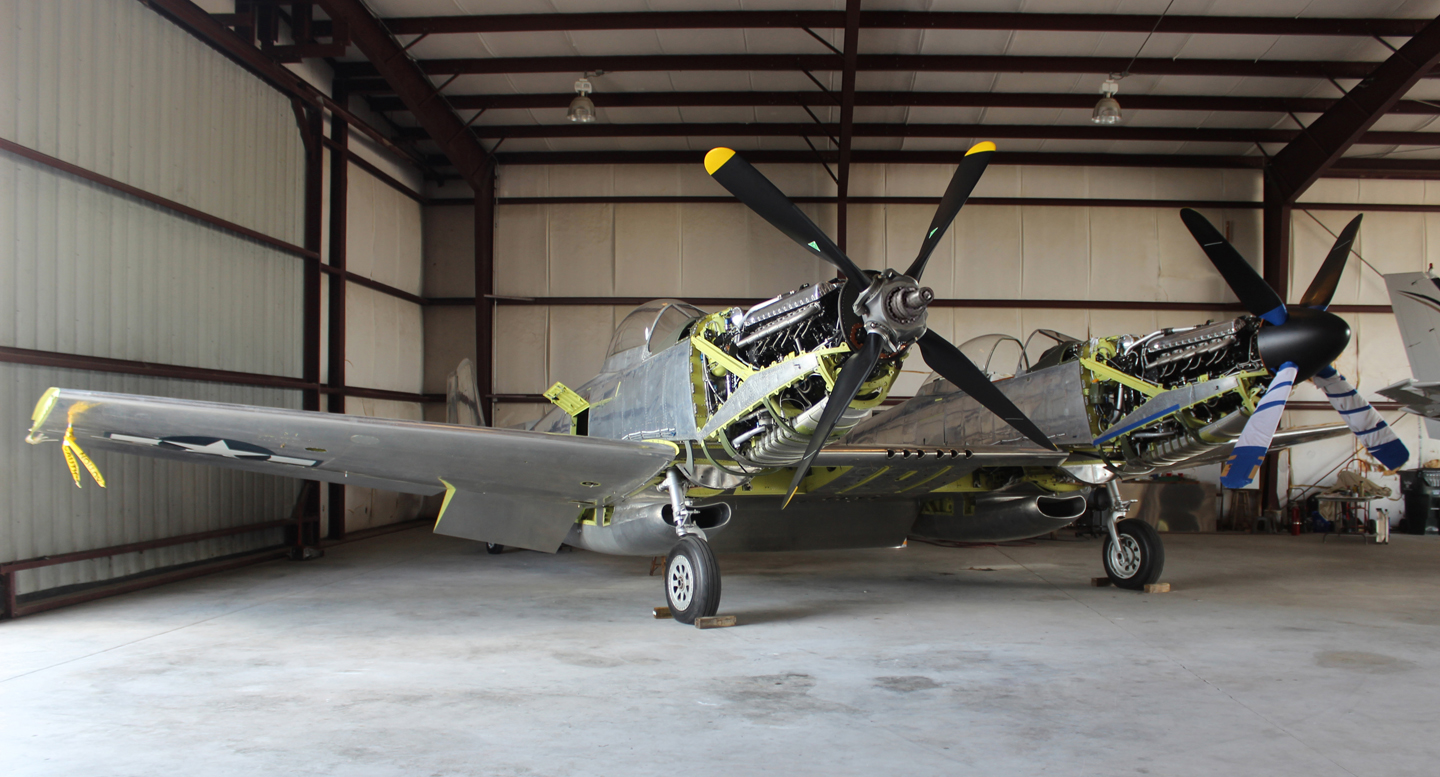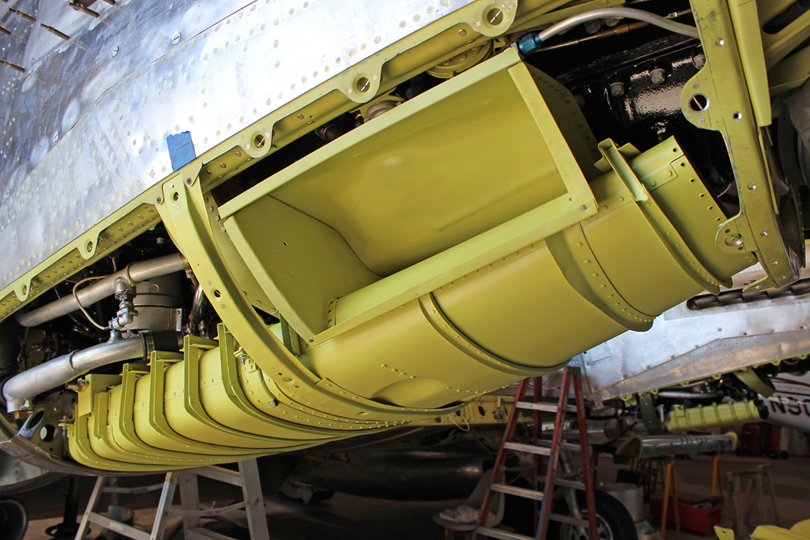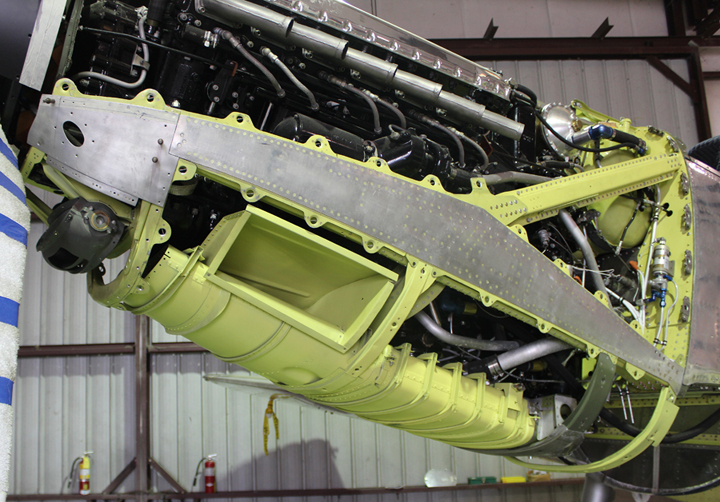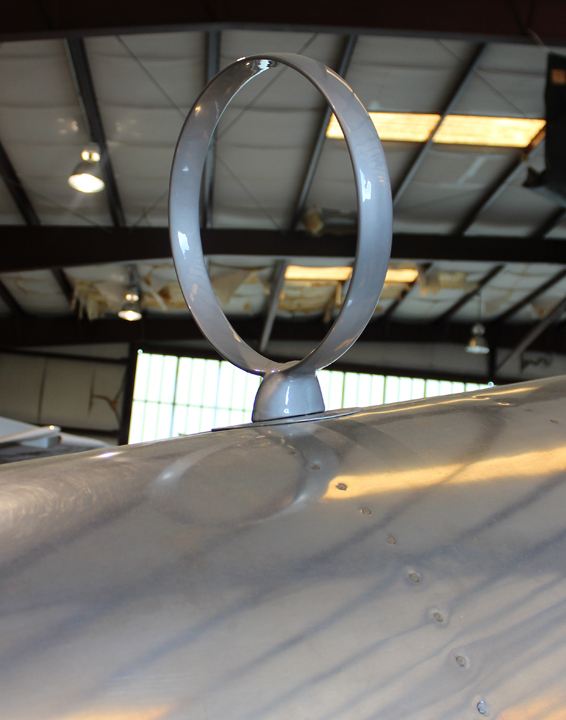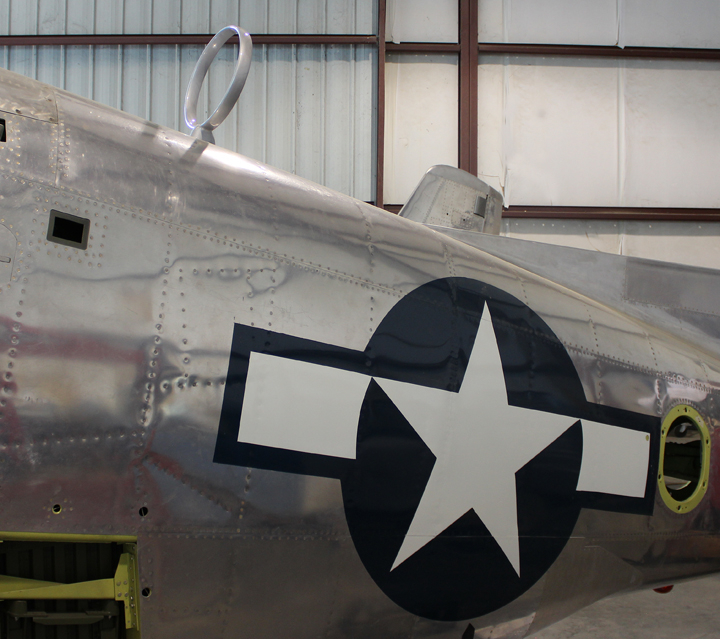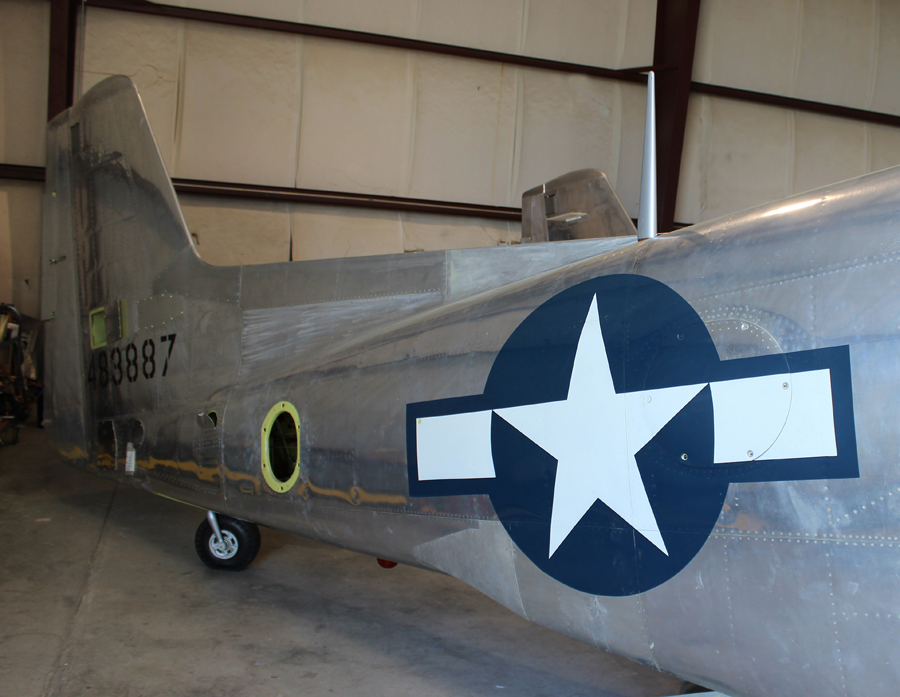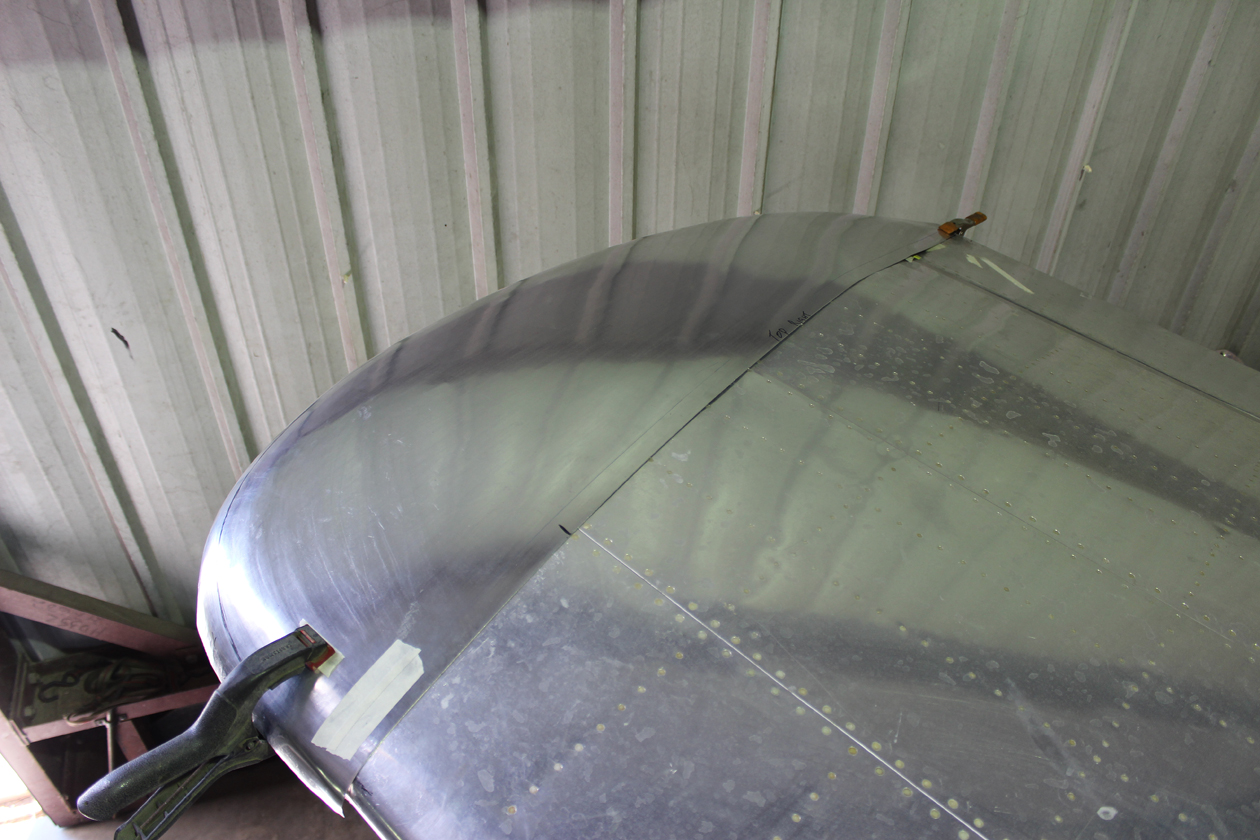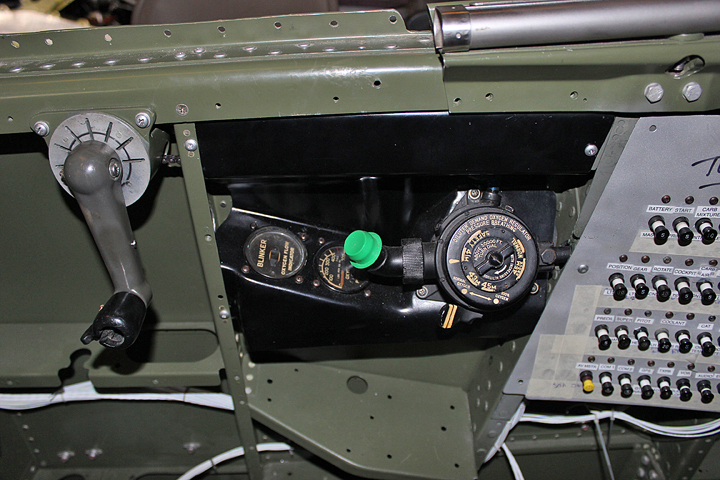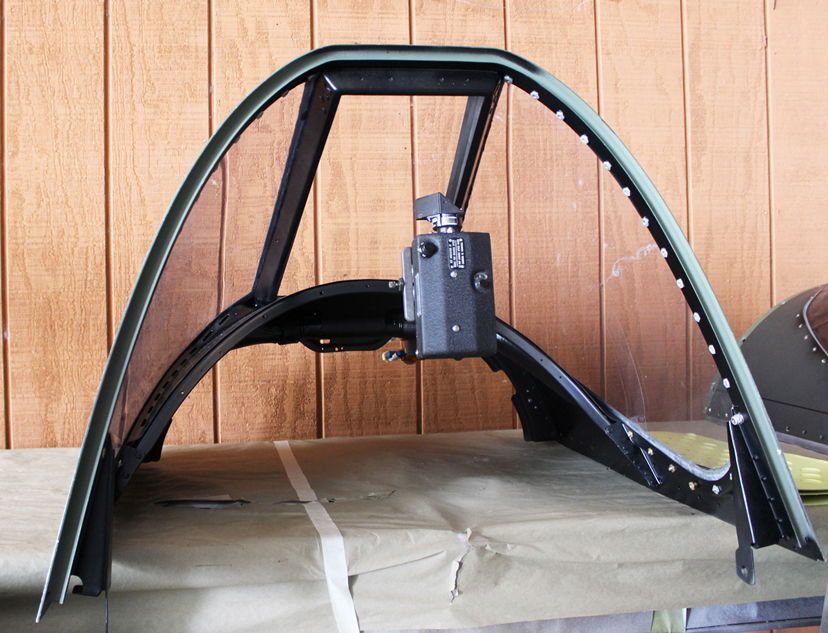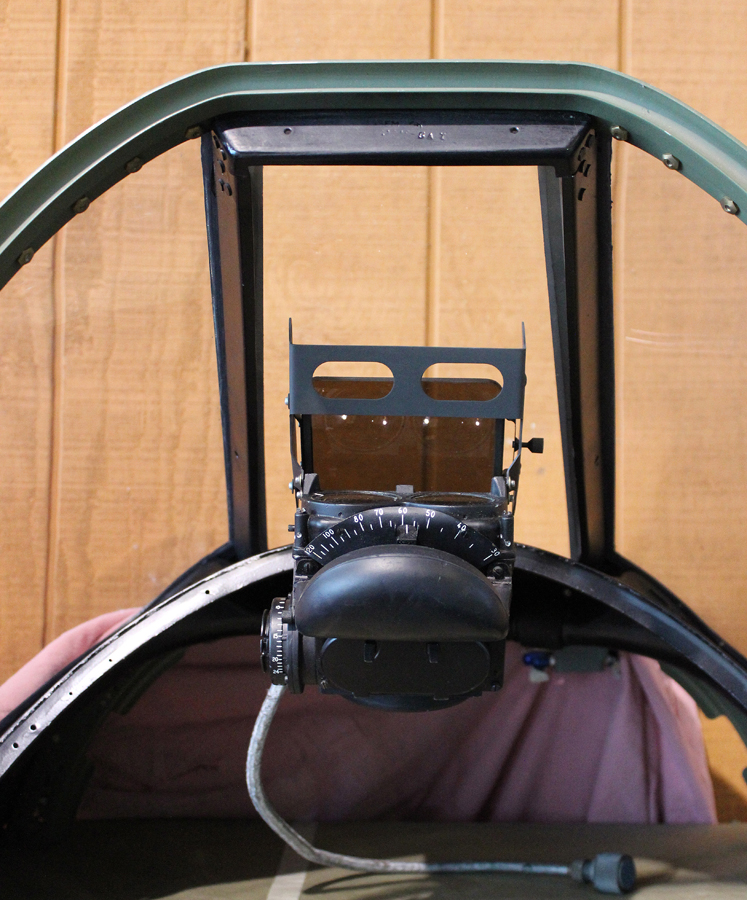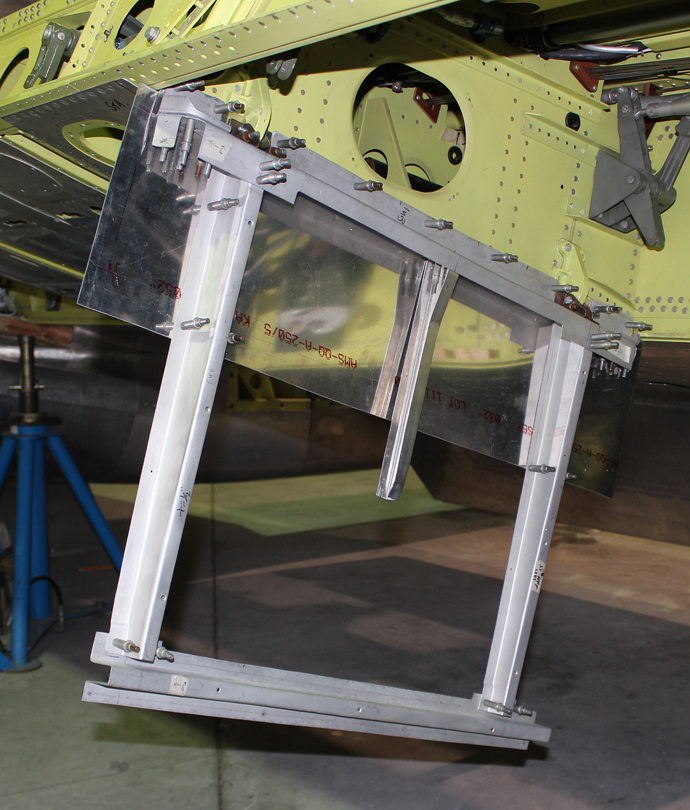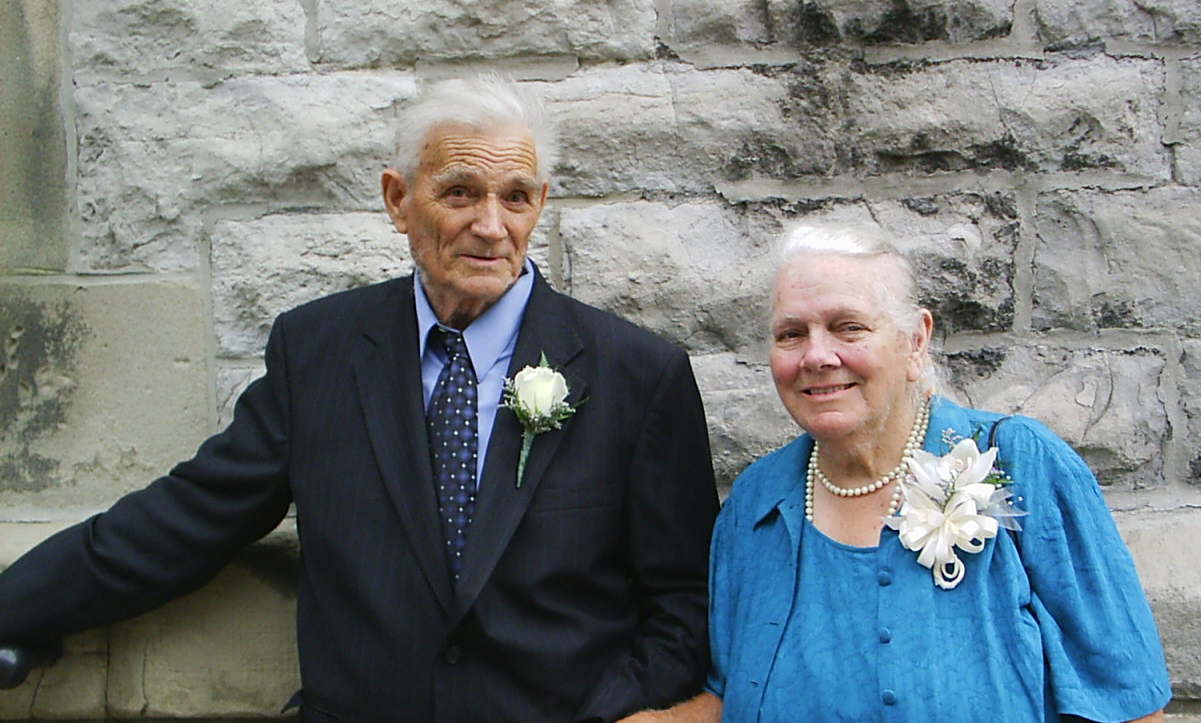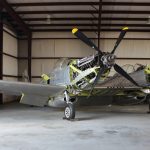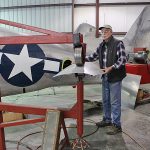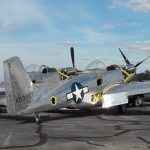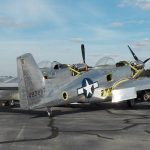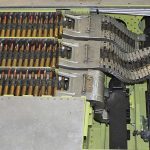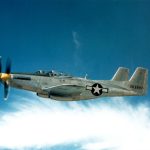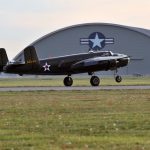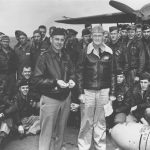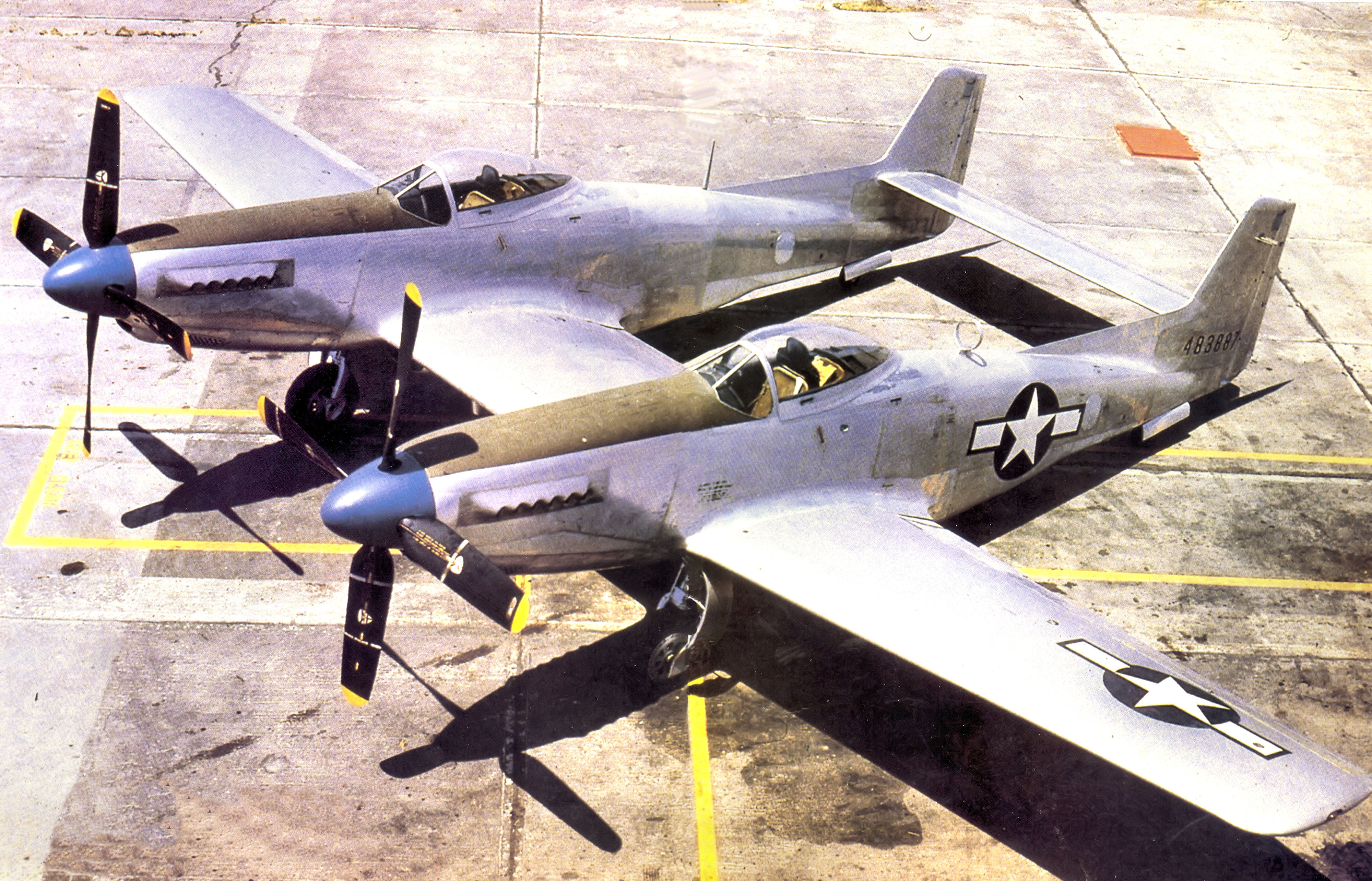
WarbirdsNews has received the latest XP-82 Twin Mustang restoration update from Tom Reilly at his workshop in Douglas, Georgia. This update is a couple of weeks later than usual, as they’ve had a lot on their plate finishing up all of the small, but still-hard-to-do details. So here’s what they’ve been up to this past month and a half!
Lower Cowlings
The final spot-welding on all of the lower cowls is now completed, and the interiors are now painted in the appropriate color.
Filtered Air Boxes
The filtered air boxes are now also completed and permanently riveted to each forward induction trunk. These filter boxes hold carburetor air inlet filters just in case the aircraft is operated off a dusty or unimproved runway. The filtered air position is selectable by either pilot. Of course, the chance that this XP-82 will ever operate off such a rough strip is probably less than zero, but for authenticity, they had to be installed. (Please note that the camera white balance isn’t quite right in these images, and distorts the true color somewhat.)
Antennae
Both the MN-26C Radio Compass ADF Loop and the AN/ARC-3 Radio Antenna Mast are now installed. Tom Reilly wishes to thank Larry Kelley and Bill Saunders for contributing these rare items.
Wing Tips
The four wing tip panels, two top and two bottom, are now final fitted. They are just awaiting the welding of their center seams and mounting screw holes and the installation of tip lights and strobes.
Cockpits
Both the pilot and co-pilot oxygen regulator/blinker panels, along with the gun sight rheostat are installed. All of the oxygen bottles are now stenciled with the original markings and reinstalled in both fuselages.
The K-14 computing gun sight and gun strike camera are now permanently installed. The strike camera presented a problem because the 90º top periscope interfered with the center armor glass since the glass had more sweep back than the P-51 windscreen. The periscope had to be shortened by a ¼” for clearance, as the later camera version had.
Main Gear Doors
The frameworks for the main inboard gear doors are now being formed to fit the curvature of the press dies for the inboard door panel. These two inboard doors are one of the last two complex hurdles the team must complete on their XP-82 restoration project.
Brakes
The last complex items are the two brake calipers. These two brake calipers are now being machined and are expected to be delivered in about two months.
Walter & Margaret (Peggy) Soplata
With much sadness we must announce the passing of Margaret (Peggy) Soplata. Walter (who passed six years ago) and Margaret Soplata from Newbury, OH, were the husband and wife team, along with their five children, who saved countless extremely rare warbirds and priceless artifacts from the smelter.
All of the warbird community owes them a debt of gratitude for saving these precious, historic artifacts for us and future generations to enjoy.
A small list of some of the aircraft and parts that the Soplata family saved:
• 2 F4U Corsairs, one 4360-powered FG1
• 2 North American B-25s
• 1 B-36 Peacemaker
• C-97 and C-82 Fuselages
• 1 A-26 Invader
• 2 TBM Avengers
• 1 P-63 King Cobra
• 1 AD4 Skyraider Prototype
• 2 F86 Sabres
• 1F7U Cutlass
• 2 T-28s
• 1 Victor Cockpit
• 1 SNJ – 7
• 1 XP-82 Twin Mustang Prototype/1 F-82E Twin Mustang
• 1 BT-13
• A rare snow-ski configured P2V Neptune that is the lone survivor of an epic
Navy expedition to explore Antarctica in the 1950s
• 1 partial F4U fuselage
• T-33 and F100 cockpits
• A number of V-12 Merlins, Allisons and radial engines
• Numerous cutaway display engines
• Countless propellers, starters, generators, magnetos, and antique WWII radios
• Countless other aviation-related artifacts
Many thanks again to Tom Reilly for this update. You can learn more about the project on their blog HERE. Please be sure to check back with WarbirdsNews in April, 2017 for the next installment in the story following the XP-82′s road to recovery!







